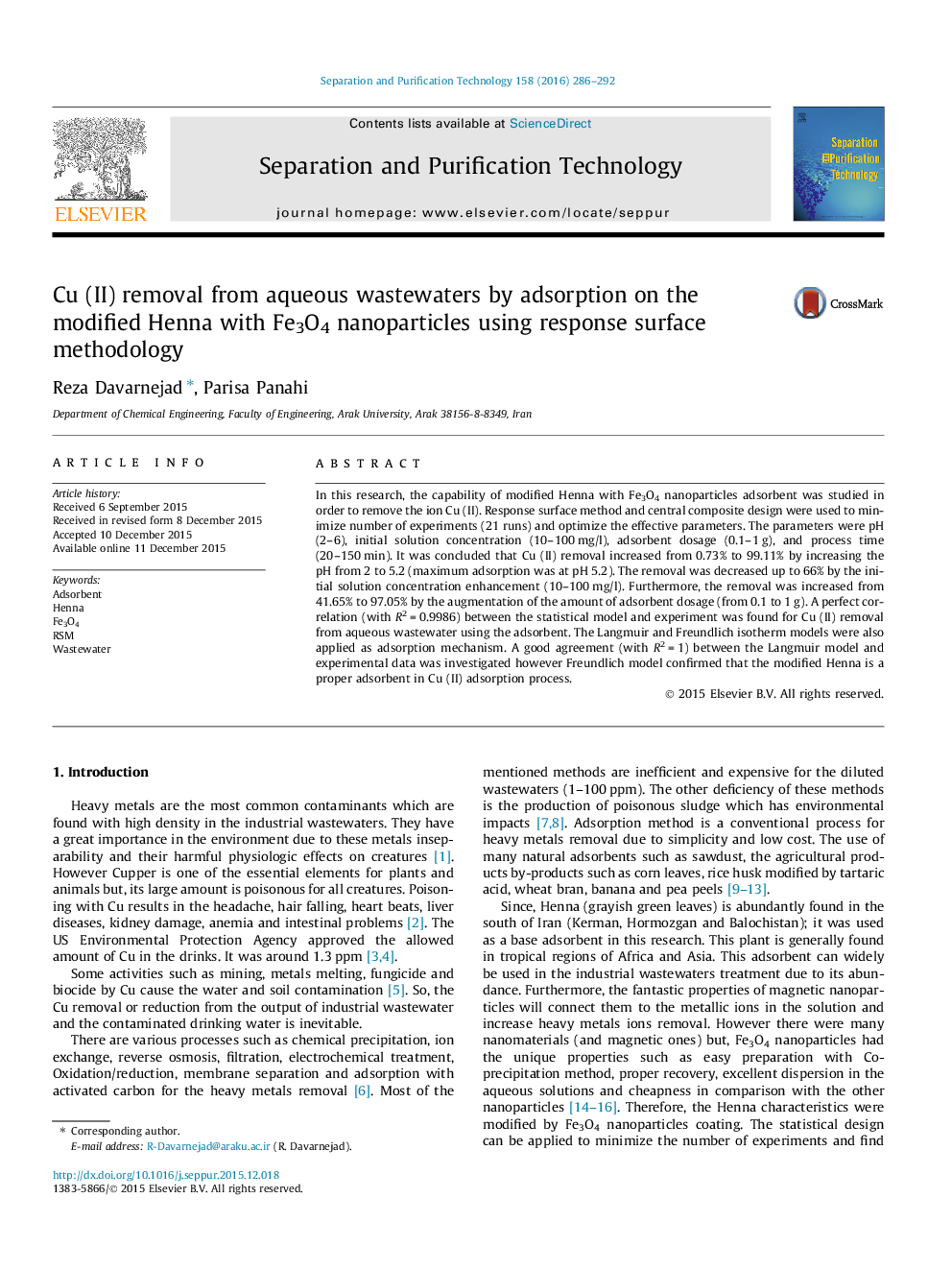| Article ID | Journal | Published Year | Pages | File Type |
|---|---|---|---|---|
| 640221 | Separation and Purification Technology | 2016 | 7 Pages |
Abstract
In this research, the capability of modified Henna with Fe3O4 nanoparticles adsorbent was studied in order to remove the ion Cu (II). Response surface method and central composite design were used to minimize number of experiments (21 runs) and optimize the effective parameters. The parameters were pH (2-6), initial solution concentration (10-100Â mg/l), adsorbent dosage (0.1-1Â g), and process time (20-150Â min). It was concluded that Cu (II) removal increased from 0.73% to 99.11% by increasing the pH from 2 to 5.2 (maximum adsorption was at pH 5.2). The removal was decreased up to 66% by the initial solution concentration enhancement (10-100Â mg/l). Furthermore, the removal was increased from 41.65% to 97.05% by the augmentation of the amount of adsorbent dosage (from 0.1 to 1Â g). A perfect correlation (with R2Â =Â 0.9986) between the statistical model and experiment was found for Cu (II) removal from aqueous wastewater using the adsorbent. The Langmuir and Freundlich isotherm models were also applied as adsorption mechanism. A good agreement (with R2Â =Â 1) between the Langmuir model and experimental data was investigated however Freundlich model confirmed that the modified Henna is a proper adsorbent in Cu (II) adsorption process.
Keywords
Related Topics
Physical Sciences and Engineering
Chemical Engineering
Filtration and Separation
Authors
Reza Davarnejad, Parisa Panahi,
